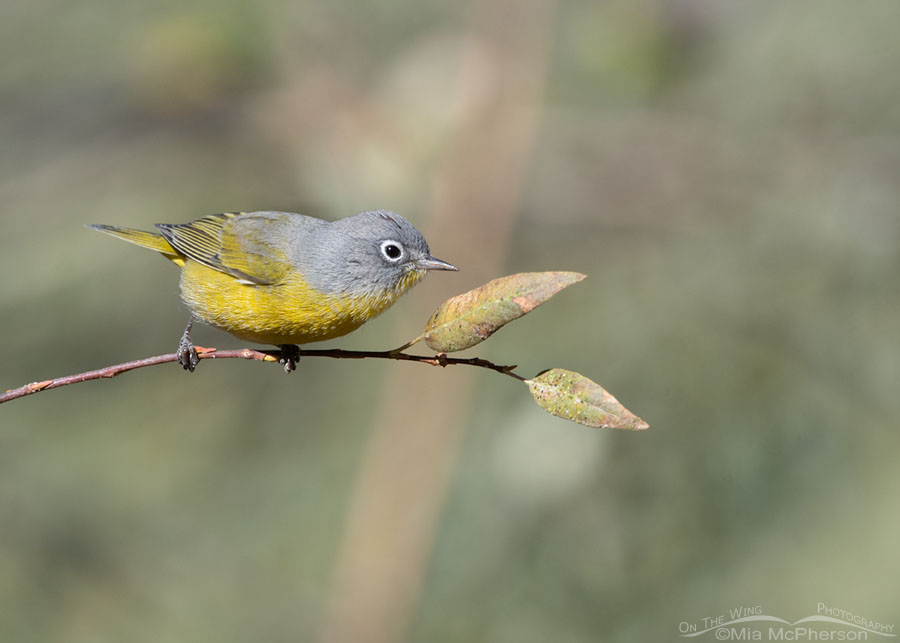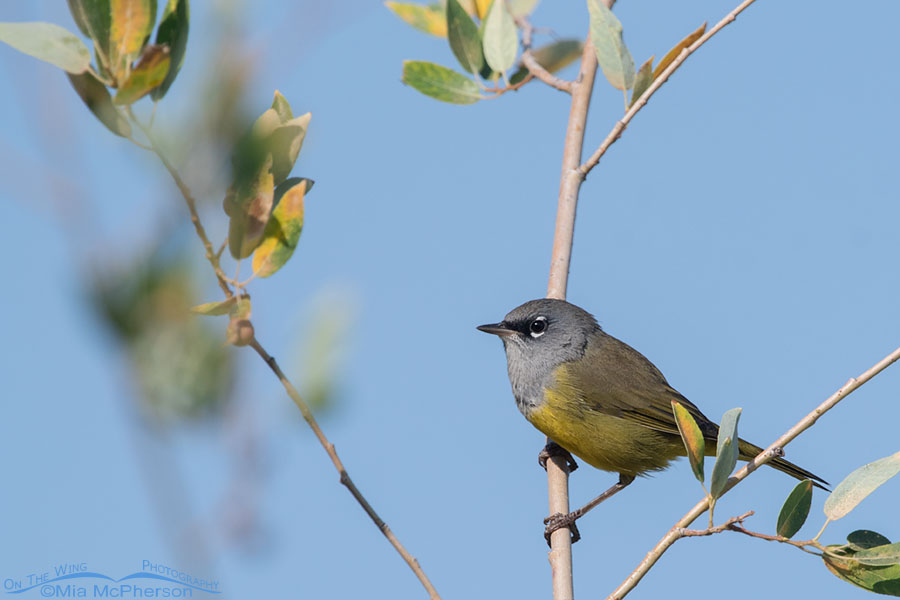In late summer I see Nashville and MacGillivray’s Warblers in the same locations and habitats foraging for the same food, aphids.
 Adult male Nashville Warbler foraging in a willow – Nikon D500, f7.1, 1/1000, ISO 500, Nikkor 500mm VR with 1.4x TC, natural light
Adult male Nashville Warbler foraging in a willow – Nikon D500, f7.1, 1/1000, ISO 500, Nikkor 500mm VR with 1.4x TC, natural light
Nashville Warblers will soon be migrating through northern Utah on their way to their wintering grounds south of the U.S. Mexico border. They don’t nest here in Utah but a similar looking warbler does and having both species in the same location can cause identification mishaps.
In September of last year I photographed this adult male Nashville Warbler searching for aphids in the leaves of a willow on the edge of a thicket high in the Wasatch Mountains.
Nashville Warblers are small warblers with olive-green or grayish upperparts, bright yellow underparts, gray heads with chestnut brown caps and bright, white, complete eye rings. Their chestnut brown cap isn’t always visible. Females and juveniles are duller in coloration.
Their unbroken white eye ring, yellow throat, yellow on their wings and the dorsal aspect of their tails are key ID features I use to separate them from from MacGillivray’s Warblers. The complete white eye ring is apparent in both sexes and young Nashville Warblers. The throats of females and immature birds are a paler yellow than seen in adult males.
 Adult male MacGillivray’s Warbler resting in a willow – Nikon D500, f7.1, 1/1600, ISO 500, Nikkor 500mm VR with 1.4x TC, natural light
Adult male MacGillivray’s Warbler resting in a willow – Nikon D500, f7.1, 1/1600, ISO 500, Nikkor 500mm VR with 1.4x TC, natural light
MacGillivray’s Warblers are medium sized warblers that have olive green upperparts and yellow underparts, broken white eye-rings and slate gray hoods that extend to their upper breasts where is can darken to black. Females are similar but paler.
This adult male MacGillivray’s Warbler was photographed last August in the same willow thicket as the Nashville Warbler. He was taking a short break from foraging for aphids when I photographed him.
The broken white eye rings and the slate gray hoods that ends midway on their breasts of MacGillivray’s Warblers are key ID features that I use to separate them from Nashville warblers. The broken white eye rings and the gray hoods are apparent in both sexes and young MacGillivray’s Warblers.
I’m asked “What is it?” quite often in and out of the field and hopefully this comparison will help other people out when it comes to Nashville and MacGillivray’s Warbler identification.
Life is good.
Mia
Click here to see more of my Nashville Warbler photos plus facts and information about this species. Click here to see more of my MacGillivray’s Warbler photos plus facts and information about this species.


Great capture!
I’d be happy to have either species foraging for aphids in my yard!
I hope to be lucky enough to see either bird this year.
Other than the eye ring, I most likely would think it was Macgillivrays if I saw it in the wild.
Hooray for aphid killers. And thank you for the lesson – which I will probably never need (Sadly).